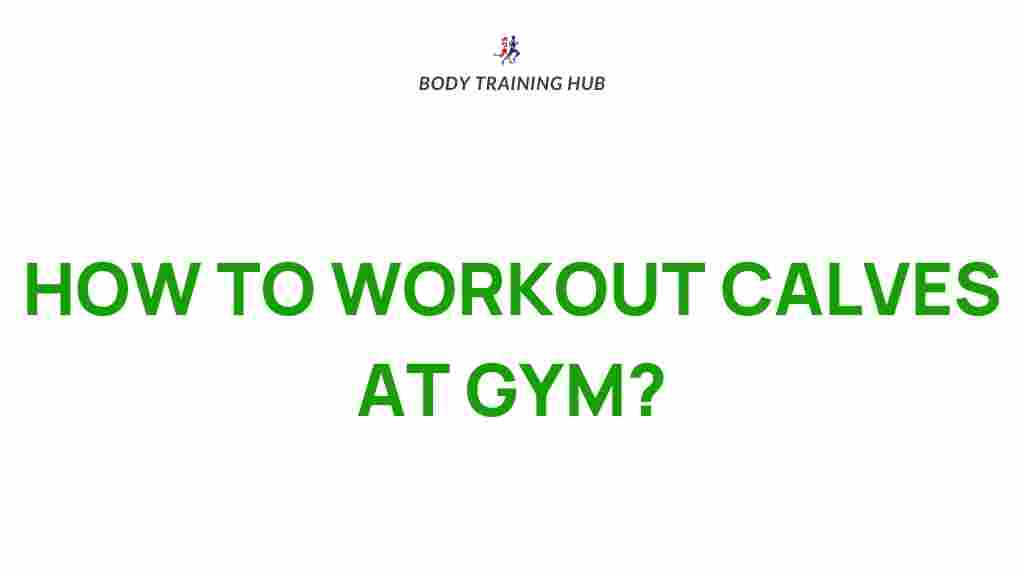Unleash Your Calves: Expert Tips for Gym Workouts
Your calves are more than just a muscle group; they are the foundation of strong, sculpted legs. Building powerful calves is essential not only for aesthetics but also for functional strength and athletic performance. In this article, we’ll dive into expert tips and strategies to help you unlock your calves’ full potential during gym workouts.
Why Focus on Calves?
The calves, composed of the gastrocnemius and soleus muscles, play a critical role in mobility and balance. Whether you’re walking, running, or jumping, these muscles drive the upward motion, contributing to stability and agility. Unfortunately, calves are often overlooked in gym routines, leading to imbalances and potential injuries.
Dedicated calf workouts not only improve strength and definition but also enhance athletic performance. So, let’s dive into the ultimate guide to mastering calf exercises at the gym.
Step-by-Step Guide to Building Impressive Calves
1. Start with Proper Warm-Up
A dynamic warm-up increases blood flow to your calves, reducing the risk of injury and enhancing performance. Try these warm-up exercises:
- Jumping jacks: Perform for 2 minutes to activate your calves.
- Calf stretches: Hold each stretch for 20 seconds to improve flexibility.
- Toe walking: Walk on your toes for 1 minute to pre-activate the muscles.
2. Choose Effective Calf Exercises
Here are some tried-and-tested exercises to unleash the full potential of your calves:
- Standing Calf Raises: Use a barbell or body weight for this fundamental exercise. Focus on controlled movements and a full range of motion.
- Seated Calf Raises: This targets the soleus muscle. Use a seated calf raise machine to isolate the muscle effectively.
- Donkey Calf Raises: A fantastic exercise to add variety and increase muscle activation.
- Box Jumps: Add an explosive element to your routine, enhancing both strength and power.
3. Optimize Your Repetitions and Sets
Calf muscles respond well to high-repetition training. Aim for:
- 3–4 sets per exercise.
- 15–20 repetitions per set for endurance and definition.
- 6–12 repetitions with heavier weights for hypertrophy.
4. Incorporate Progressive Overload
To ensure continuous growth, gradually increase the resistance or intensity of your workouts. Use heavier weights, increase repetitions, or perform exercises with added resistance bands.
5. Focus on Form and Tempo
Proper form is crucial to prevent injuries and maximize muscle engagement. When performing calf raises, ensure your heels drop below the platform for a full stretch and rise to your toes for peak contraction. Maintain a slow, controlled tempo to avoid momentum.
Troubleshooting Common Challenges
Despite your efforts, you might encounter roadblocks in building your calves. Here’s how to overcome them:
1. Plateau in Growth
If your calves stop growing, it’s time to switch up your routine. Try new exercises, alter your rep ranges, or adjust your tempo to keep challenging your muscles.
2. Muscle Imbalances
Perform unilateral exercises like single-leg calf raises to correct imbalances between your left and right calves.
3. Poor Flexibility
Tight calves can limit your range of motion. Dedicate time to stretching and foam rolling after workouts to enhance flexibility.
Tips to Enhance Calf Development
Maximize your results with these expert tips:
- Consistency is key: Train your calves at least 2–3 times a week for steady progress.
- Variety matters: Rotate between different exercises to target all parts of the muscle.
- Mind-muscle connection: Focus on contracting your calves during each rep to improve muscle engagement.
- Recovery is essential: Allow your muscles to rest and recover with proper nutrition and sleep.
Supplement Your Efforts
Nutrition plays a vital role in muscle growth. Ensure you consume a protein-rich diet, along with adequate carbohydrates and healthy fats to fuel your workouts and recovery. If you’re unsure about your nutritional needs, consult with a certified nutritionist.
Additional Resources
For a detailed guide on achieving overall leg strength, check out our article on full-body leg workouts. It’s packed with tips to complement your calf training efforts!
Conclusion
Building strong, defined calves requires dedication, consistency, and the right strategies. By incorporating effective exercises, proper form, and progressive overload into your gym routine, you’ll see impressive results. Remember to address challenges proactively and fuel your efforts with proper nutrition and recovery.
Now is the time to unleash your calves and elevate your gym workouts to the next level. Start today and watch your progress soar!
This article is in the category Strength & Recovery and created by BodyTraining Team
